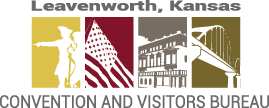The Building Blocks of a C.W. Parker Carousel Horse
- By Jerry Reinhardt, director, C.W. Parker Carousel Museum
C.W. Parker carousel horses were built much the same as all the other manufacturers of carousel figures in the world. They constructed them in sections. First, there was the "Body Block". It was a hollow box, with a belly plate, a top plate, and some blocks of wood to fill in the ends. All the grains ran in the same direction. Parker always added a block of wood for the cantel and the cantel carving.
The "Neck Block" was also a hollow box with the center chamber leading to the head to the head block. The wild manes of some of the Parker horses were planks of wood inserted between the outside layers that formed the neck.
The "Head Block" was almost always 3 planks of wood with the center one cut out so that air could flow all the way from the body block through the neck block and into the head block. This keeps the humidity even throughout the horse and prevents splitting and checking of the wood.
The legs were two shaped pieces of wood, with a lap joint to form the breaks in the angles of the legs.
All of this was glued with "Hide Glue" (boiled animal skin) and then nailed, with #16 finish nails.
After the carving on the horse was finished, it went to the painter for a professional paint job and was mounted on a carousel to be shipped to the new owner.
The "life expectancy " of a carousel horse on the carnival circuit was five years. Most of the horses in our Carousel Museum are over 100 years old now.



